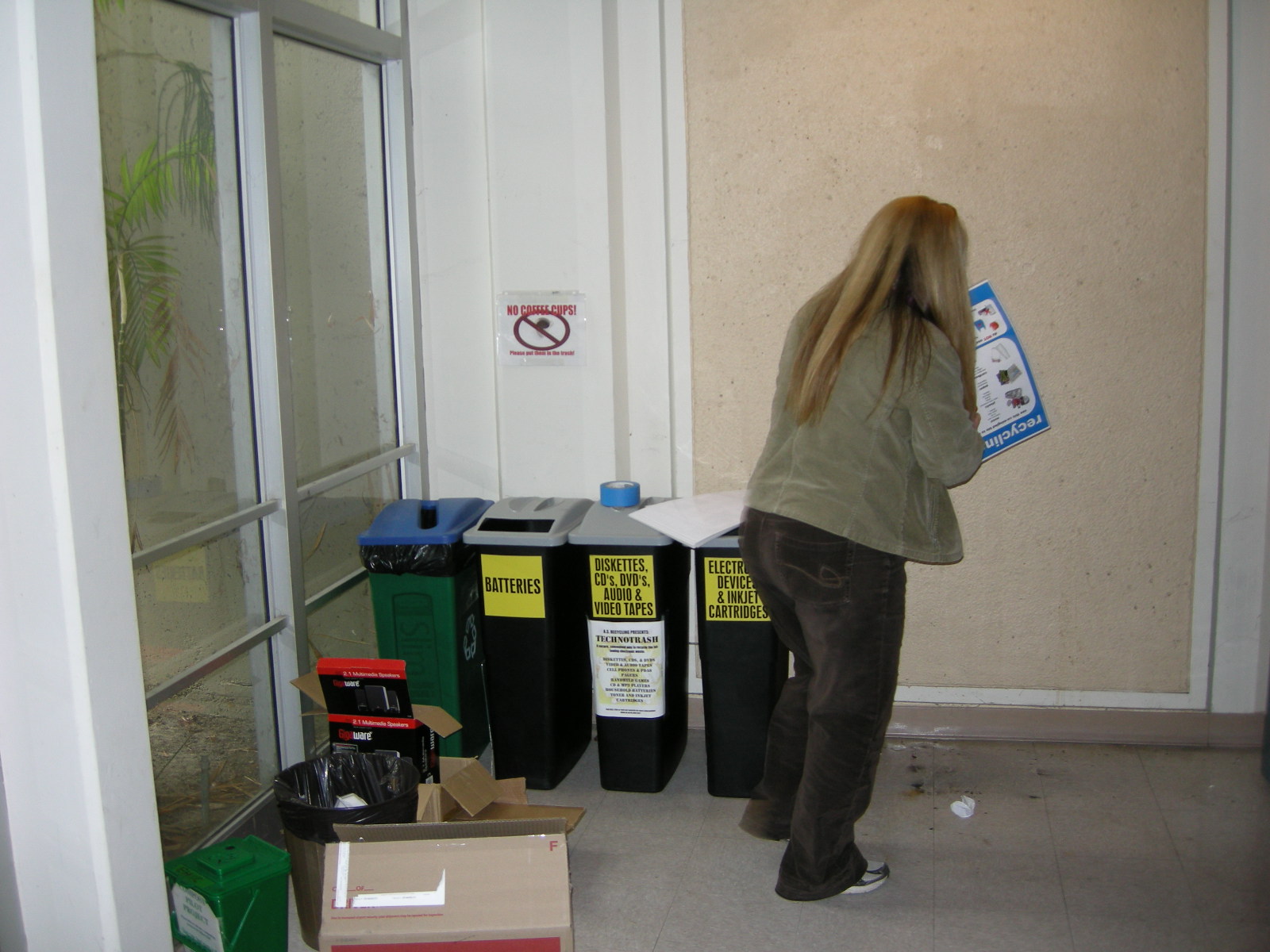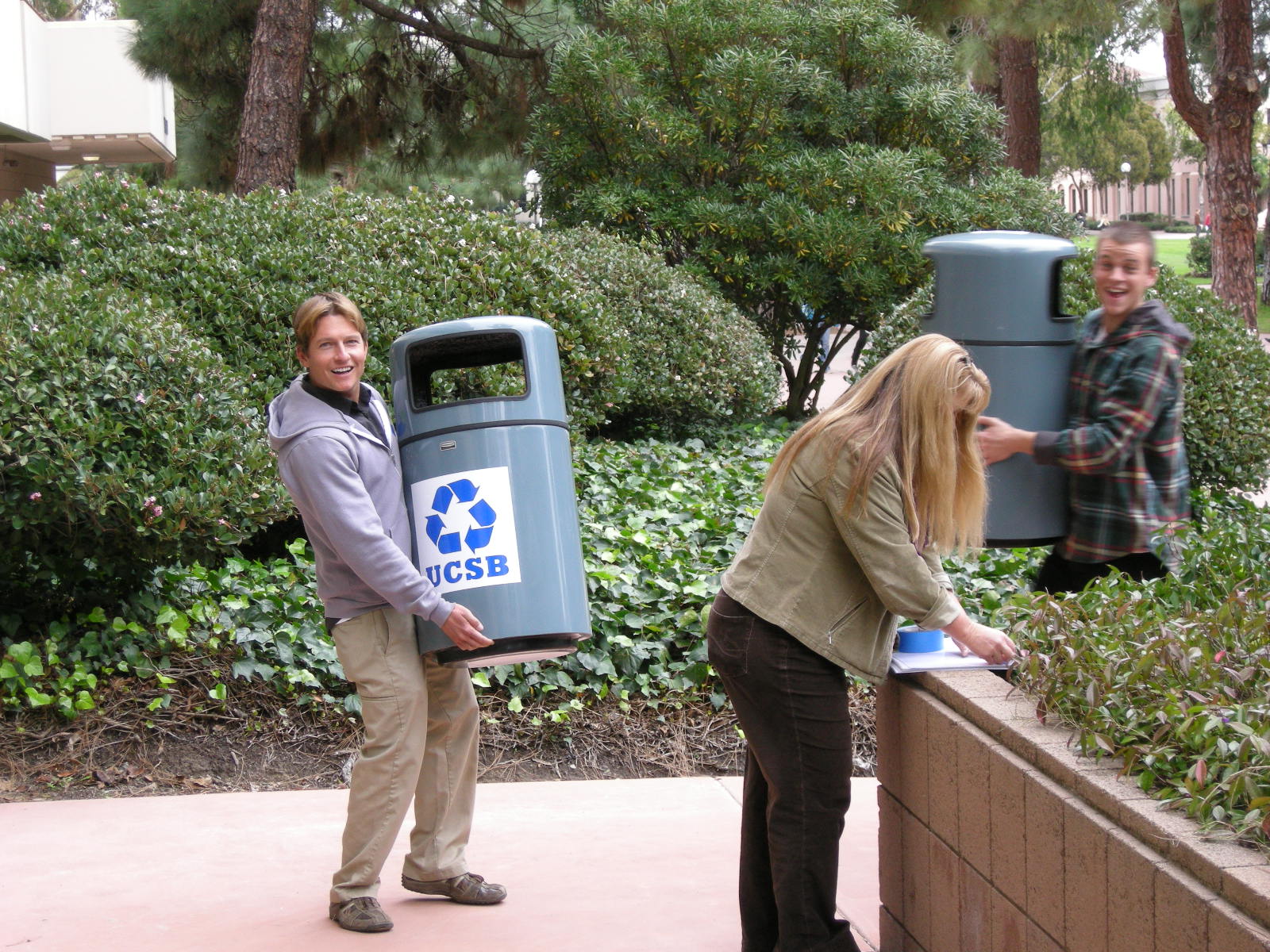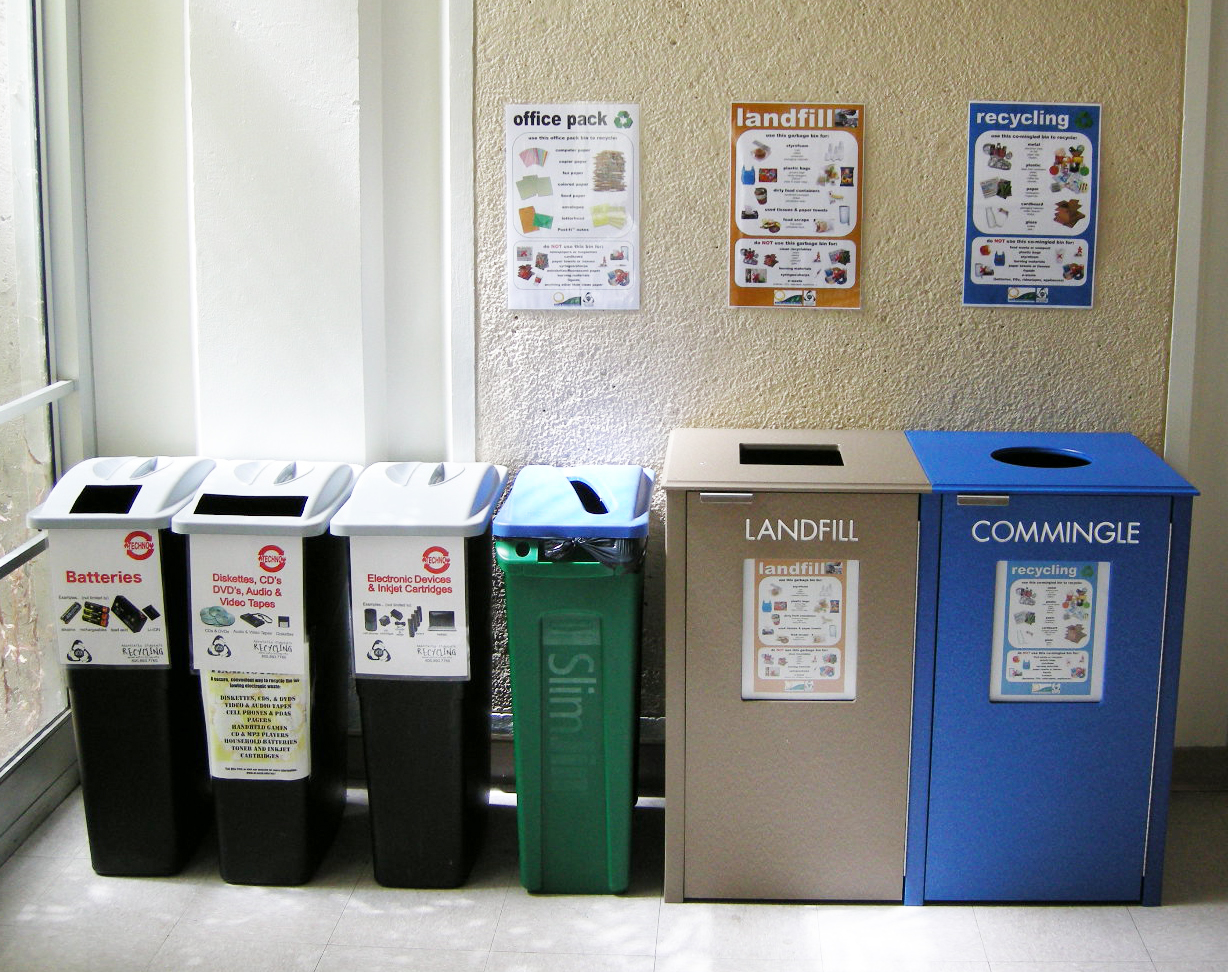The Green Initiative Fund (TGIF) was the first green fee in the UC system. It was created by UCSB students in the spring of 2006 with a charge to “reduce the University’s impact on the environment.” Students voted with an overwhelming majority to pay $2.60 per quarter, contributing approximately $182,000 a year towards TGIF. The fee was renewed in the spring of 2010 for another four years. One of the first projects funded by TGIF was the improvement of the gathering of recycling materials, and, to this end, a pilot project on the outdoor “berthas” (the tan outdoor recycling clusters serviced by the Associated Students Recycling Route/Bicycle Riders) waste bins located by the eateries on campus will be re-labeled to match the in-building recycling program for four types of waste: co-mingled, office pack, landfill and, now, compost. This effort will help standardize recycling across the campus with the goal of recycling 75% of our waste by 2012 and 95% by 2020.
But the devil is in the details. It soon became apparent that the signage on recycling bins needed improvement. What, for example, was the difference between the “office pack” bins and the blue bins meant for some (not all) paper? Did “electronic waste” include the plastic case and card description accompanying a CD? Where do you dispose of lightly soiled paper plates used for food? The answer to these and many other questions wasn’t obvious to many, and the solution boiled down to experimenting with new signage.
In 2007, Mo Lovereen, Executive Officer in Geography wrote a proposal to TGIF to test recycle bin systems and signage inside Ellison Hall. And – those devilish details again – it was soon realized that the signage was more effective when placed on a wall above each bin than when it was put on the front side of a bin, and it also became obvious that graphics accompanying text greatly improved the efficacy of the signage.
In 2010, Jackie Treadway (Co-Chair of the sustainability change agent waste team) funded 111 co-mingle bins that were partnered with bins left over from Mo’s TGIF project. New signage was also installed for each of the new containers. After testing these bins for a year, Senior Associate Vice Chancellor Marc Fisher decided to test a new set of in-building bins (pictured at right) that are made of recycled milk cartons. If we get good feedback on these test bins located in the Ellison and Cheadle Hall lobbies, Marc will fund additional landfill and co-mingle bins in other buildings across the campus.
What isn’t so obvious is the plain old hard work that goes into physically installing, monitoring, and emptying recycling bins. This grunt work is done by volunteers who care about sustainability and who spend a great deal of time and effort in encouraging the rest of us to not only recycle, but to know how and where to recycle as well. Those recycling bins that you take for granted didn’t get placed across campus and hauled up to all floors of many campus buildings by accident (Mo’s aching muscles will attest to that) – and, if their signage isn’t immediately clear to you, the least you can do is to make an effort to read the instructions carefully. If in doubt, don’t cop out–ask a UCSB Sustainability officer or intern for clarification. As they say, garbage in, garbage out.





